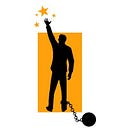Member-only story
Rehabilitation vs retribution
Which better serves justice?

Is justice served if incarcerated individuals’ time in prison doesn’t serve the purpose of rehabilitation?
Marc Howard explains in his book, “Unusually Cruel: Prisons, Punishment and the Real American Exceptionalism,”that prisons were originally established to serve the dual function of punishment and rehabilitation. But somewhere during the nation’s “war on crime,” the system stopped focusing on the rehabilitation part of the equation and instead emphasized retribution — often to the exclusion of the other. The result is a subculture of mostly black and brown people who feel left behind and ostracized by society, leaving them ill-prepared to reenter society upon release. This is important, because if we are serious about our ultimate goal of ensuring public safety, we must think really hard about how we treat and educate our incarcerated population of 2.3 million.

In “Equipping Individuals for Life Beyond Bars,” Monique Ositelu states that 94 percent of incarcerated people will one day be released from prison — an average of 700,000 a year. Yet most will leave without the necessary education and skills to earn a legal, livable income. This is in large part due to a lack of access to education beyond high school. By 2025, 60 percent of new American jobs will require some level of postsecondary education, yet it’s estimated that only 35% of state prisons and 24% of federal institutions provide college-level courses. (In fact, 41% of the incarcerated population don’t even have a high school diploma.)
The cost of so this failure in public policy is clear: A RAND Corp. report has shown that individuals who participate in any type of educational program while in prison are 43 percent less likely to return.
My own story is a testament to how a person who is locked up, punished and made to feel like an “inmate” turns out vs. an individual who is treated humanely and allowed the opportunity to develop and rehabilitate themselves:
